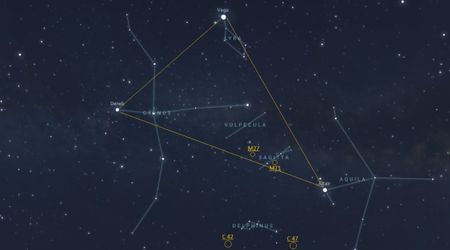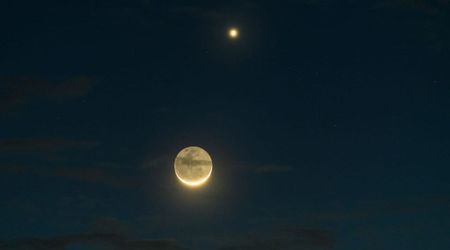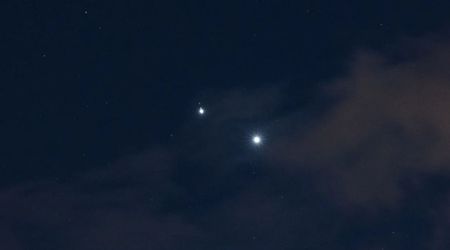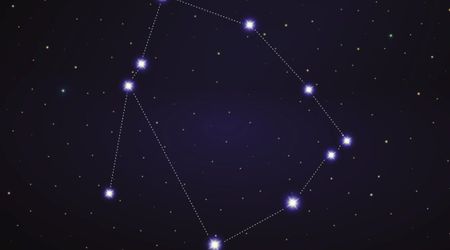Watch Lacerta — The Lizard — constellation silently weave through the midnight sky on July 22

Stargazers are encouraged to turn their eyes skyward tonight, July 22, as the constellation Lacerta, also known as The Lizard, makes its subtle appearance in the midnight heavens. This often-overlooked grouping offers a unique viewing opportunity for both amateur astronomers and seasoned skywatchers, as per Astronomy.com.
#Today Chandra is looking into Lacerta, the lizard. Nearby in the sky is NGC 7250, a galaxy that looks like it's being photobombed by a star. The star is actually in the foreground — between Earth & the galaxy — and it's about a million times closer to us than the galaxy itself. pic.twitter.com/NZ8dwcp63p
— Chandra Observatory (@chandraxray) September 28, 2020
Positioned in the northeastern sky following sunset, Lacerta can be located beneath the prominent constellation Cygnus and to the lower right of Cepheus. Its brightest star, Alpha Lacertae, shines at a magnitude of 3.8 and serves as a crucial guidepost. This unassuming star is situated approximately 19 degrees east of Cygnus's brilliant Deneb.

Alpha Lacertae also provides a direct path to the open cluster NGC 7243, also recognized as Caldwell 16. This cluster, visible to the unaided eye as a faint, diffuse glow, is an ideal target for those new to stargazing with binoculars. Spanning 15 arcminutes and shining at magnitude 6.4, NGC 7243 reveals a captivating central 8th-magnitude star under magnification. Small telescopes will resolve nearly 40 individual stars within the cluster, while larger instruments will unveil even more. Scientists estimate that this youthful cluster is approximately 100 million years old.

The region now occupied by Lacerta was a subject of the varied nomenclature throughout the 17th and 18th centuries, with proposals ranging from Spectrum (The Sceptre) to Fredrick's Glory. However, the designation by Johannes Hevelius in 1687, Lacerta, the Lizard, ultimately prevailed. Some of its stars, like Alpha and Beta Lacertae, are relatively close to our solar system (within 200 light-years) but exhibit limited luminosity. Conversely, highly luminous stars such as the supergiant 4 Lacertae appear much fainter due to their immense distances, spanning thousands of light-years from Earth, according to eSky.
Despite its overall sparse nature, Lacerta's position within the Milky Way offers some intriguing deep-sky objects. Observers with telescopes can find two open star clusters, designated C16 and Collinder 444, in the northern part of the constellation. Both clusters are situated approximately 3,000 light-years away and are too faint for naked-eye viewing. Far beyond these clusters lies a particularly unique object: BL Lacertae. This immense elliptical galaxy is notable for its highly volatile core, which exhibits rapid and significant fluctuations in brightness. This characteristic led early astronomers to initially mistake BL Lacertae for a variable star.

As the 68th largest constellation, Lacerta encompasses an area of 201 square degrees within the northern celestial sphere, specifically in the fifth quadrant (NQ4). It is entirely visible to observers between +90° and -40° latitudes. Its celestial neighbors include the constellation Andromeda, Cassiopeia, Cepheus, Cygnus, and Pegasus. The name "Lacerta" is Latin for "lizard," and its genitive form, Lacertae, is used in star designations. The International Astronomical Union (IAU) adopted its three-letter abbreviation, Lac, in 1922, as mentioned in the Constellation Guide.
Lacerta is one of the 88 modern constellations officially recognized by the IAU. This definitive list, along with its abbreviations, was established by American astronomers Henry Norris Russell and approved by the IAU in May 1922, aligning with the Revised Harvard Photometry star catalogue from 1908, as per Constellation Guide. The precise boundaries of these constellations, as they are known today, were meticulously drawn by Belgian astronomers Eugène Delporte and formally adopted in 1928. Of these 88 constellations, 36 are predominantly located in the northern celestial hemisphere, while 52 reside in the southern sky.









